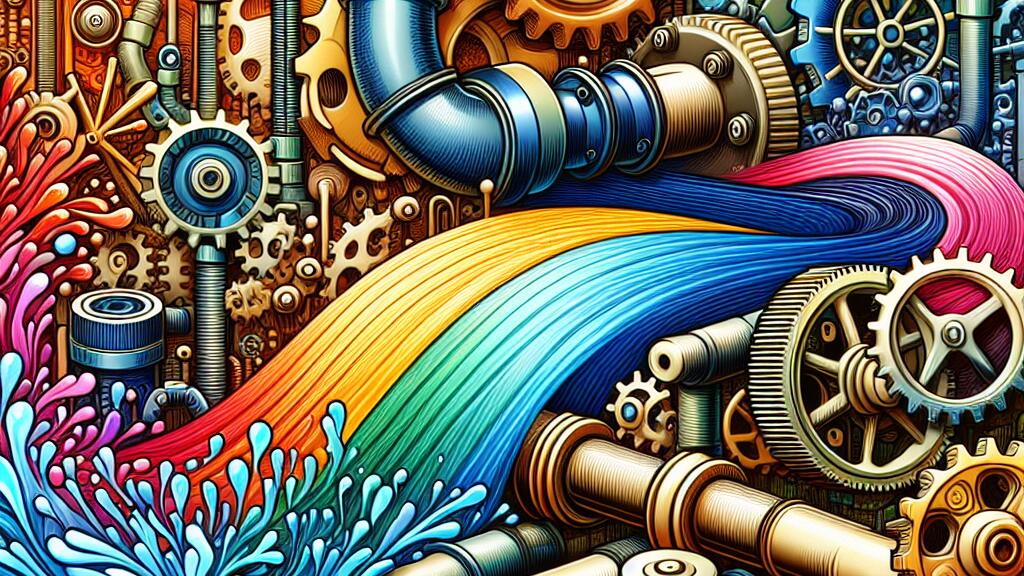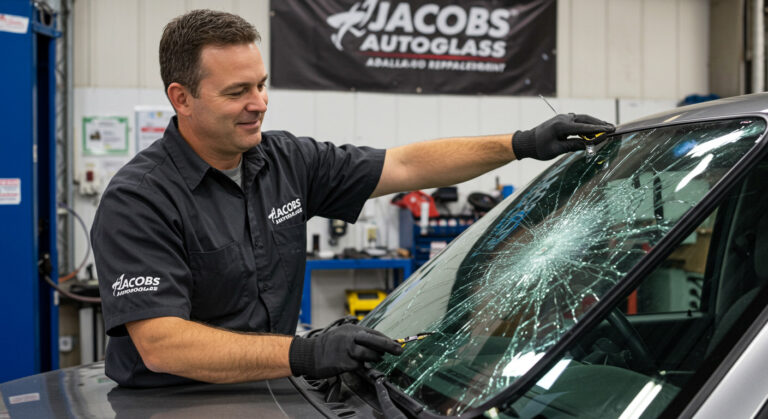Essential Guide to Waste Water Parts for Efficient Water Management
Understanding Waste Water Parts
Waste water parts play a crucial role in the effective management of wastewater and its treatment. Each component of wastewater systems, including water-tanks, pumps, and filtration systems, contributes to the overall efficiency and functionality of the wastewater treatment process. Properly designed waste water parts ensure that water is treated effectively, minimizing environmental impact and promoting public health. Understanding these key components is essential for anyone involved in the planning, maintenance, or upgrading of wastewater treatment facilities. Recognizing the importance of each part can lead to better choices and innovations in managing our water resources.
Definition and Importance
Waste water parts are essential components of wastewater treatment plants, meticulously designed to manage and purify used water. These parts play a crucial role in the broader context of water treatment, ensuring that harmful contaminants are effectively removed before the water is released back into the environment. Their functionality directly impacts the efficiency of the entire cleaning process, making reliable and properly functioning waste water parts indispensable for maintaining clean water standards.
The importance of efficient waste water parts extends beyond the facilities themselves. Effective wastewater treatment plants help protect public health and the ecosystem by minimizing pollution and conserving valuable water resources. Innovations in water-filtration systems and other waste water parts continue to advance, further enhancing their effectiveness and resilience. Understanding the significance of these components is vital for anyone involved in water management or environmental protection.
Key Components of Waste Water Systems
A well-designed waste water system relies on several key components to function efficiently. Essential waste water parts include the sewer lines, which transport wastewater away from homes and businesses. Sludge management is critical, as this byproduct must be effectively handled to prevent environmental contamination. Hoses are commonly used to connect various parts of the system and facilitate the movement of liquids.
Innovative technologies like waterjet cutting have improved the manufacturing and installation of waste water parts, enhancing system reliability. Each component must work seamlessly to ensure smooth operation and maintain public health standards. Understanding these parts and their roles provides insight into the overall effectiveness of waste water systems.
Types of Waste Water Parts
Understanding the various waste water parts is essential in managing and treating contaminated water effectively. Pumps serve a crucial role by transporting waste water, ensuring the removal of debris through hoses that connect different components. Treatment tanks, often made of durable plastic, facilitate the sedimentation and biological breakdown of waste, while filtration systems are designed to capture remaining particles, enhancing the overall quality of the water. For specific applications, like in recycling or pond maintenance, selecting the right waste water parts ensures optimal performance and sustainability. Each component contributes to a comprehensive system aimed at improving water quality and protecting the environment.
Pumps and Their Role
Pumps are crucial components in waste water parts, facilitating the movement of fluids through various plumbing systems. They play a significant role in transferring waste from locations such as swimming pools and septic tanks to treatment facilities. By ensuring a steady flow, pumps help maintain the efficiency of the entire waste water management process.
Selecting the right pump is vital for optimal performance in waste water systems. Various types of pumps are available, each designed to cater to specific applications and conditions. Understanding the requirements of different settings, whether it involves a residential septic tank or a commercial waste water treatment facility, is essential for effective plumbing and management of waste water parts.
Treatment Tanks and Their Functions
Treatment tanks play a crucial role in the waste water parts system by facilitating the effective separation and treatment of solid and liquid waste. These tanks help in breaking down organic materials, which can subsequently be processed by pumps to move the treated water toward the leach field. Properly designed treatment tanks contribute to reducing the environmental impact of waste water and ensuring safe effluent discharge.
Different types of molding techniques are used to manufacture treatment tanks, ensuring durability and resistance to corrosion. This longevity is essential, as treatment tanks often operate under challenging conditions, encountering a range of waste water parts. Regular maintenance and monitoring of these tanks enhance their efficiency, leading to improved performance in the overall waste water management system.
Filtration Systems
Filtration systems play a pivotal role in the efficiency of waste water parts within the wastewater treatment industry. These systems are designed to remove solid particles and contaminants from industrial water and wastewater, ensuring that treated water meets regulatory standards before being discharged or reused. Various types of filtration methods, such as sand filtration or membrane filtration, are utilized, each offering distinct advantages depending on the specific characteristics of the water being processed.
The effectiveness of filtration systems directly impacts the overall performance of industrial water and wastewater plants. By employing advanced filtration technologies, these plants can enhance the quality of treated water and reduce the environmental footprint associated with waste water parts. This innovation supports sustainable practices in the wastewater treatment industry while also addressing the growing demand for clean water resources.
Common Materials Used in Waste Water Parts
The materials chosen for waste water parts significantly impact the efficiency and longevity of wastewater treatment assets. Metals and alloys are often utilized for their durability and structural integrity, making them ideal for high-pressure applications in sludge digestion equipment. Conversely, plastics and composites provide lightweight alternatives that resist corrosion, thereby enhancing the function of various water treatment products. Recent trends also show a shift towards eco-friendly materials, which address environmental concerns while maintaining effectiveness in complete water management systems. Selecting the right materials for waste water parts is crucial to ensuring optimal performance and sustainability in treatment processes.
Metals and Alloys
Many waste water parts are constructed from various metals and alloys due to their durability and resistance to corrosion. For instance, components like pipes and tanks often utilize stainless steel or galvanized steel, ensuring they can withstand harsh conditions while effectively transporting and storing clearstream wastewater. These materials are vital in maintaining the integrity of systems that rely on american sewer parts, as they prevent leaks and failures that could lead to costly repairs and environmental issues.
Aluminum and brass are also popular choices for sewer equipment, particularly in applications requiring lightweight materials that can handle fluctuations in pressure. These metals can enhance the efficiency of sewer cleaning operations, as they facilitate easier handling and installation. The selection of the right metal or alloy for waste water parts is crucial for their longevity and performance, impacting the overall effectiveness of the waste water management system.
Plastics and Composites
The use of plastics and composites in waste water parts has gained significant attention due to their lightweight and corrosion-resistant properties. Unlike traditional steel sewer components, these materials can withstand harsh chemical environments while maintaining structural integrity. This makes them especially useful in applications such as effective sewer cleaning, where waterjet technologies can dislodge new debris without damaging the surrounding infrastructure.
Consideration of durability and cost-effectiveness drives the choice of materials for waste water parts. Composites often offer similar strength characteristics to metals but at a lower weight, making installation and maintenance easier. As the industry continues to evolve, the incorporation of these innovative materials plays a crucial role in enhancing the efficiency of waste water systems while addressing the environmental impacts associated with steel sewer components.
EcoFriendly Materials
The use of eco-friendly materials in waste water parts has gained significant attention due to environmental concerns. These materials play a crucial role in minimizing the ecological footprint of systems like pond aeration and septic tank parts. Sustainable alternatives not only enhance the performance of cleaning processes but also contribute to healthier ecosystems by reducing harmful emissions and waste.
Biodegradable plastics and recycled composites are becoming popular choices for manufacturing tanks and other components. These eco-friendly materials ensure durability while promoting sustainability in waste water management. Their application helps in creating systems that are efficient and less damaging to the environment, showcasing how innovative solutions can align with ecological responsibility.
Maintenance of Waste Water Parts
Regular care and attention to waste water parts is essential for optimal system performance. Routine inspections help identify issues like clogged drainage or worn-out hose fittings before they escalate into more significant problems. The use of maintenance products tailored for specific components, such as pumps and treatment tanks, ensures that all parts function efficiently. Incorporating new sewer grit can enhance filtration processes, while timely repairs extend the lifespan of waste water parts. Prioritizing maintenance not only safeguards the infrastructure but also promotes a healthier environment.
Routine Inspections
Regular inspections of waste water parts are essential to ensure optimal operation and prevent costly failures. Components such as pump parts, flexible hoses, and treatment tanks require periodic checks to identify wear and tear. Areas that collect pools of standing water can indicate leaks or blockages, creating additional maintenance challenges. Utilizing sewer trucks for pumping out accumulated waste can help mitigate these issues before they escalate.
Timely inspections allow for the identification of potential problems within the waste water system, ensuring longevity and reliability. Keeping an eye on the condition of waste water parts can significantly reduce downtime and enhance overall efficiency. A thorough examination of parts, including flexible hoses and connection fittings, should be part of a comprehensive maintenance routine. This proactive approach aids in maintaining compliance with environmental regulations and safeguarding public health.
Cleaning and Repairs
Regular maintenance of waste water parts is crucial for optimal functionality and longevity. Utilizing cleaning accessories such as style hoses can significantly enhance the efficiency of the cleaning process. Ultrahigh-pressure waterjet cutting stands out as an effective method for addressing tough build-up and blockages. This technique is especially valuable for drainage pumps, ensuring that they operate smoothly and without unnecessary strain.
Timely repairs are equally important to prevent larger issues from developing in waste water parts. Identifying wear and tear early can save time and resources. It is advisable to inspect components regularly, ensuring any necessary adjustments or replacements are made promptly. By maintaining the integrity of the drainage pumps and employing advanced cleaning techniques, facilities can ensure a reliable waste water management system.
Innovations in Waste Water Parts
The landscape of waste water parts is evolving with the integration of smart technology and advanced engineering practices. Innovations such as automated cleaning nozzles enhance the efficiency of treatment processes, ensuring that waste water is processed effectively. The development of durable hose mending equipment allows for quicker repairs and lower maintenance costs in waste water systems. New manufacturing techniques lead to the creation of better quality manufactured parts that withstand harsh environments. These advancements not only improve performance but also contribute to more sustainable management of waste water parts.

Smart Technology Integration
The integration of smart technology into waste water parts is revolutionizing the way systems are managed and monitored. Advanced sensors and IoT devices provide real-time data on the performance and efficiency of key components. This allows for better decision-making and proactive maintenance, ultimately leading to improved finished products. The tube® product line exemplifies how modern innovations can optimize waste water parts by offering seamless connectivity and advanced monitoring capabilities.
Smart solutions enhance the ability of waste water parts to function effectively in diverse environments. Automated controls can adjust processes based on varying conditions, ensuring that products work optimally at all times. Such technologies not only improve efficiency but also contribute to sustainable practices. By investing in these innovative products, facilities can achieve significant reductions in operational costs while maintaining high standards in waste water management.
Advances in Filtration and Treatment
Recent advancements in filtration technologies have transformed the effectiveness of waste water parts. Innovative equipment now utilizes advanced materials that enhance the removal of contaminants from waste water. These products not only improve the overall quality of the treated water but also extend the lifespan of various supplies used in the filtration process. As a result, these developments contribute to more sustainable waste water management practices.
Emerging treatment solutions are making a significant impact on the efficiency of waste water systems. Enhanced treatment equipment leverages smart technology, enabling real-time monitoring and control of various processes. Such advancements allow for more precise adjustments in the treatment workflow, optimizing performance and reducing operational costs associated with maintenance and equipment replacement. These innovations showcase the growing importance of integrating cutting-edge technology in waste water parts.
Choosing the Right Waste Water Parts
Selecting the appropriate waste water parts is crucial for the efficiency and effectiveness of industrial water and wastewater plants. Understanding system requirements is essential, as different facilities may have unique demands based on their scale and processing capabilities. The wastewater treatment industry is constantly evolving, making it vital to evaluate the latest technologies and parts that enhance performance and reliability. Cost considerations also play an important role, as budgeting for quality waste water parts can lead to long-term savings through reduced maintenance and increased operational efficiency. Properly chosen components not only ensure compliance with environmental regulations but also improve the overall quality of treated water.

Evaluating System Requirements
Proper evaluation of system requirements is crucial for the selection of waste water parts. Factors such as flow capacity, type of debris, and specific applications must be considered. For instance, using a waterjet can enhance effective sewer cleaning by addressing new debris that may accumulate in the system. Understanding the characteristics of your steel sewer can lead to more informed choices regarding the necessary components for optimal performance.
Another important aspect is ensuring compatibility among the selected waste water parts. Different types of components must work seamlessly together to maintain functionality and longevity. Evaluating the system’s demands allows for the integration of advanced technologies that improve efficiency. This also helps in anticipating the need for future upgrades or replacements, thereby reducing operational disruptions in the waste water management process.
Cost Considerations
Investing in waste water parts involves careful evaluation of both initial costs and long-term maintenance expenses. Quality cleaning nozzles and efficient hose mending equipment play a crucial role in maintaining system performance. Selecting durable manufactured parts can reduce replacement needs and associated costs, emphasizing the importance of prioritizing quality over the cheapest option.
Budgeting for waste water parts requires a thorough understanding of system requirements and operational demands. Overlooking the potential costs of repairs or replacements may lead to unforeseen expenses down the line. It is essential to consider the compatibility of various components, such as enhanced filtration systems, to ensure efficient operation without incurring additional costs in the future.
Conclusion
Understanding the importance of waste water parts is crucial for effective management and treatment systems. Various components, including septic tank parts, tanks, and filtration systems, play specific roles in the overall process. The integration of technologies, such as pond aeration, enhances efficiency and promotes cleaner output. Regular cleaning and maintenance of these waste water parts ensure optimal performance and longevity. As innovations in filtration and treatment continue to evolve, selecting the right components becomes essential for both residential and industrial applications.
FAQS
What components are necessary for treating water at industrial water/wastewater plants?
The key components necessary for treating water at industrial water/wastewater plants include filtration systems, chemical dosers, and settling tanks. These components work together to effectively store clearstream wastewater and ensure it meets quality standards before discharge or reuse.
What essential elements should be considered in the construction of waste water parts for efficient water treatment?
When designing waste water parts, it is crucial to include essential elements such as filtration systems, sedimentation tanks, and aeration units. These components play a vital role in ensuring the efficiency of water treatment processes and are integral to the overall design of wastewater infrastructure.
What are the functions of the different parts involved in wastewater treatment systems?
The various parts involved in wastewater treatment systems serve essential functions that contribute to the purification process. Key components include screening devices to remove debris, sedimentation tanks for settling solids, biological treatment units for degrading organic matter, and disinfection areas to eliminate pathogens. These parts work together to ensure effective wastewater management and environmental protection.
How do different waste water parts contribute to the overall efficiency of wastewater treatment systems?
Different waste water parts, such as sedimentation tanks, aeration basins, and filtration units, play crucial roles in enhancing the overall efficiency of wastewater treatment systems. Each component is designed to perform specific functions that are vital for effectively reducing contaminants and ensuring clean water is returned to the environment.
What innovations in waste water parts have emerged to improve efficiency in treatment systems?
Recent innovations in waste water parts, such as advanced filtration technologies and bio-reactor designs, have significantly improved efficiency in treatment systems by enhancing pollutant removal and reducing operational costs.







